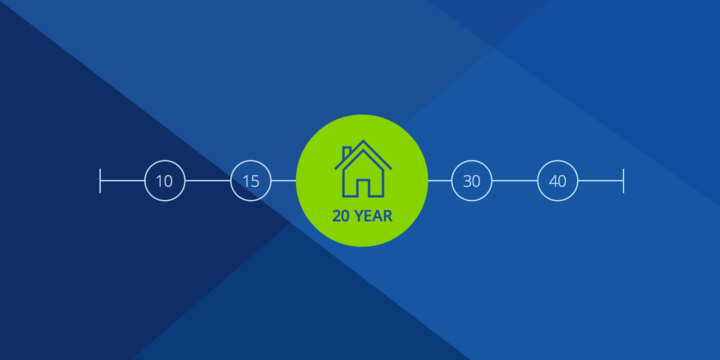How to Lower Your Debt-to-Income Ratio?


Written by Alycia Lucio on November 12, 2024
While you don’t need to be debt-free to qualify for a mortgage, lenders use your debt-to-income ratio (DTI) to determine a comfortable mortgage payment based on your earnings and minimum debts. A lower DTI signals to a lender that a greater percentage of your income can go toward your monthly mortgage payment.
From reducing your existing debts, to increasing your income, here are six strategies for lowering your DTI ahead of applying for a mortgage.
1. Reduce your monthly minimums
Your DTI is based on minimum monthly payments on your credit cards and other debts. The balance on these debts, including credit cards, student loans and auto loans, doesn’t impact your DTI. What matters is how much you pay towards those debts each month. Paying down your debts may help you qualify for lower minimums. If you’re able, paying off your debts can reduce the number of debt payments you make each month, and will also help lower your DTI.
2. Increase your income
Increasing your monthly income can help lower your DTI. Even if a second job may not count towards qualifying income on a mortgage, it can be used to pay down debts (lowering monthly payments) and help you save up for a down payment and closing costs on a new home. Consider getting a part-time job, starting a side hustle, or asking for a raise at your current job. Keep in mind that if you take on a second job or side hustle, it can take up to two years of consistent income for some lenders to consider it part of your employment history.
3. Consolidate your debt
Debt consolidation is the process of combining multiple debts to make a single monthly payment toward one balance with one interest rate. It is usually done by taking out a personal loan to pay off several smaller loans, which means you’ll have to meet the lender’s financial criteria. However, the monthly payment for most debt consolidation plans is typically lower than the total amount of your previous payments to various creditors, which can lower your DTI.
4. Negotiate your interest with creditors
Some private lenders, typically those offering private student loans or credit cards, may be willing to negotiate your interest rate. To do so, the lender typically requires a history of making on-time payments and having a good credit score (usually 700 or higher). A lower interest rate can decrease your monthly payment amount, allowing you to make higher payments toward your principal balance, so you can pay your debt off faster.
5. Avoid taking on new debts
Whether you have room on your credit cards or have enough income left over to cover a short-term private loan, you want to avoid racking up more debt. Using up your remaining credit or taking out new loans will affect your credit score, increasing your DTI, which is the opposite of what you want to do when applying for a mortgage.
6. Consider a co-signer or co-borrower
When you use a co-signer or co-borrower, the lender will consider everyone’s financial factors. They’ll typically combine your individual DTI ratios, potentially lowering the percentage and bolstering your mortgage application. A lower DTI can also help you obtain better mortgage rates.
Curious about your loan eligibility? Check how much you pre-qualify to borrow with us at Zillow Home Loans*
*An equal housing lender. NMLS #10287
Want to learn more about DTI?
- Why is DTI important?
DTI is the metric lenders use to compare your monthly recurring debts to your monthly income. Your debt-to-income ratio is one of the leading financial factors lenders use to assess your ability to make mortgage payments. Your lender checks if you can comfortably afford to make payments, or if it will be a struggle over the long term. The current DTI limits were put in place to protect you as a borrower. This helps avoid a repeat of the 2006-2007 housing crisis, when many mortgage borrowers took out larger loans than they could afford.
- What is a good debt-to-income ratio?
A good debt-to-income ratio is one where your total debts make up a smaller portion of your gross monthly income. A DTI of 50% or less will meet most lender qualifications for a mortgage loan, because it shows you have enough money left over to put towards other expenses or savings. Each type of mortgage has a different DTI threshold.
- How is DTI calculated?
To calculate your DTI, just add up your monthly debt payments and divide that total by your gross monthly income (which is your pre-tax income). Then, multiply the result by 100 to get your DTI percentage. You can use our Debt-to-Income Ratio Calculator to do the math for you and determine where you stand.
How much home can you afford?
At Zillow Home Loans, we can pre-qualify you in as little as 5 minutes, with no impact to your credit score.
Zillow Home Loans, NMLS # 10287. Equal Housing Lender
Get pre-qualifiedHow much home can you afford?
See what's in reach with low down payment options, no hidden fees and step-by-step guidance from us at
Zillow Home Loans.
Zillow Home Loans, NMLS # 10287. Equal Housing Lender
Calculate your BuyAbility℠
Related Articles
Get a mortgage with Zillow Home Loans
Go from dreaming to owning with low down payment options, competitive rates and no hidden fees. A dedicated loan officer will guide you until you have your keys in hand.

Zillow Home Loans, NMLS #10287. Equal Housing Lender.



